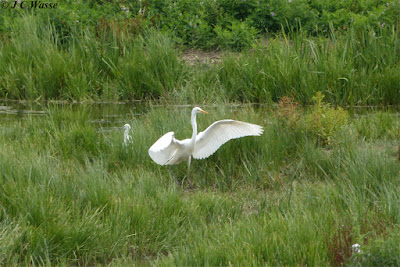Best gull species in the world? It's also a tie, this time between Sabine's Gull and Caspian Gull.
Why Sabine's Gull?
No reply necessary, just have a look at that plumage?
Ok, they look more stunning in real life than a scanned grainy image of a photo, the olde worlde equivalent of today's boc photo! - Farmoor Res, Oxon Aug 2001.
Why Caspian Gull?
No longer a mythical species, but they can be tricky to pick out of a gathering of gulls no matter how experienced the birder.
- Firstly, is the gull you're looking at a Caspian Gull, or do you just want it to be a Caspian Gull? We've all made that judgement call.
- Then when we think you've nailed it, is the individual a pure Caspian Gull, or with Herring Gull genes? A colour-ring on its leg from the continent may help with such head-scratching (the birder that is) individuals.
- Can they vary in appearance like the Herring Gull complex. Some may say they are just another member of the Herring Gull complex.
- Some birders say they are easier to identify in immature plumage, is that really true?
- One question we can all agree on the answer to is, are we still learning? Always!
I've mentioned previously that because I seldom see this species, every encounter is like seeing this taxon for the first time. This understanding can be helped by having the chance to see and study returning individuals, just like the Eagle Pond, Snaresbrook, London bird, now in adult plumage. The photos below are of it on 01 December 2019 a week or so after it returned to this urban pond.
It was tolerant of the Black-headed Gulls but not too friendly towards Herring Gulls. It chased a similarly aged Herring Gull around in flight over the pond, when they both banked you could see the subtle difference in the shade of grey of the upperwing. The Caspian Gull being a shade darker than Herring Gull, though not as dark grey/blue toned of a Yellow-legged Gull.
More photos of the Caspian Gull at 'Latest UK Bird Photos'
Video footage of this gull from 01 December 2019 uploaded at my 'YouTube Channel -2019 Playlist'























































